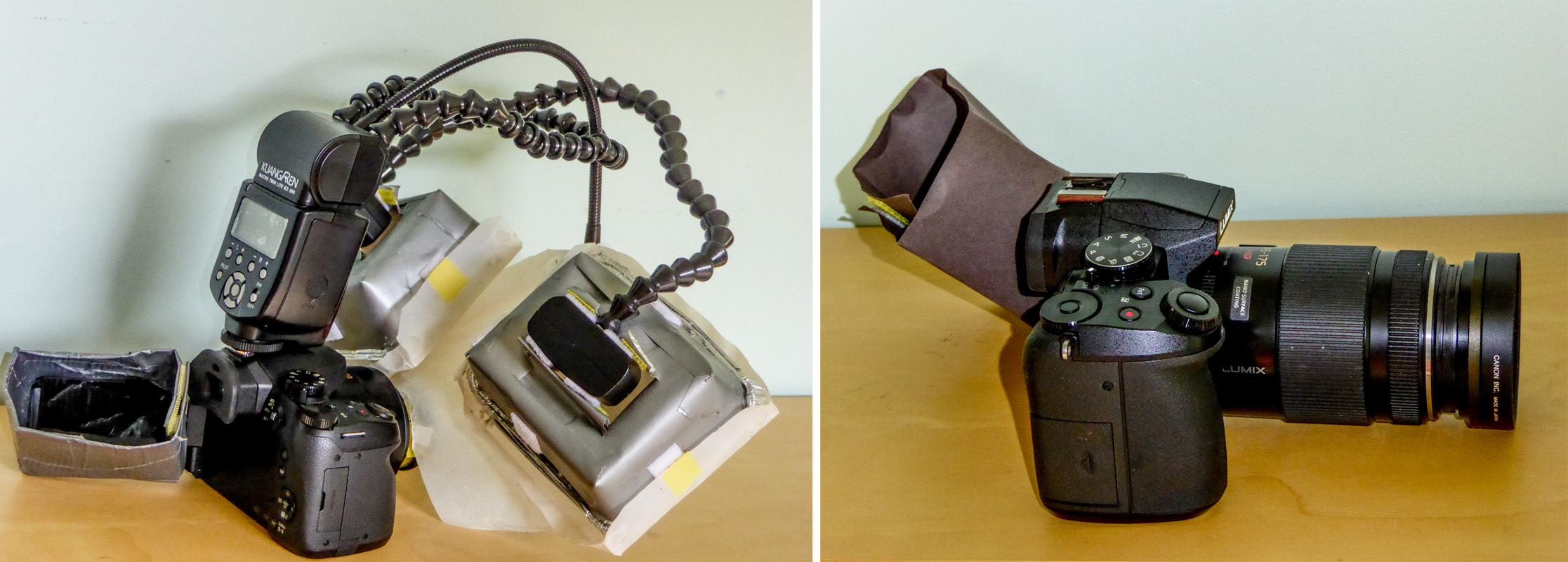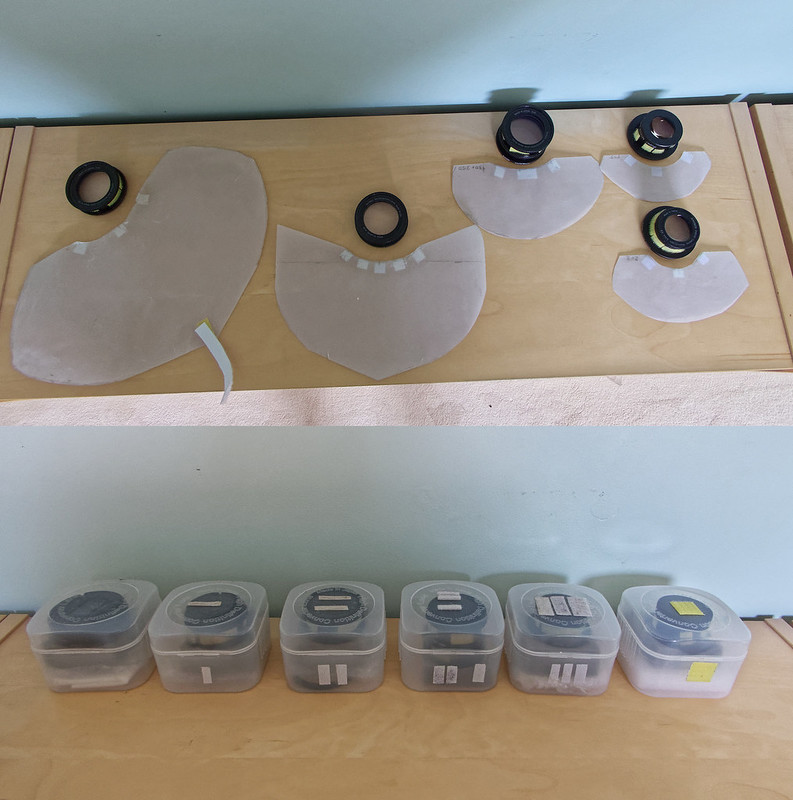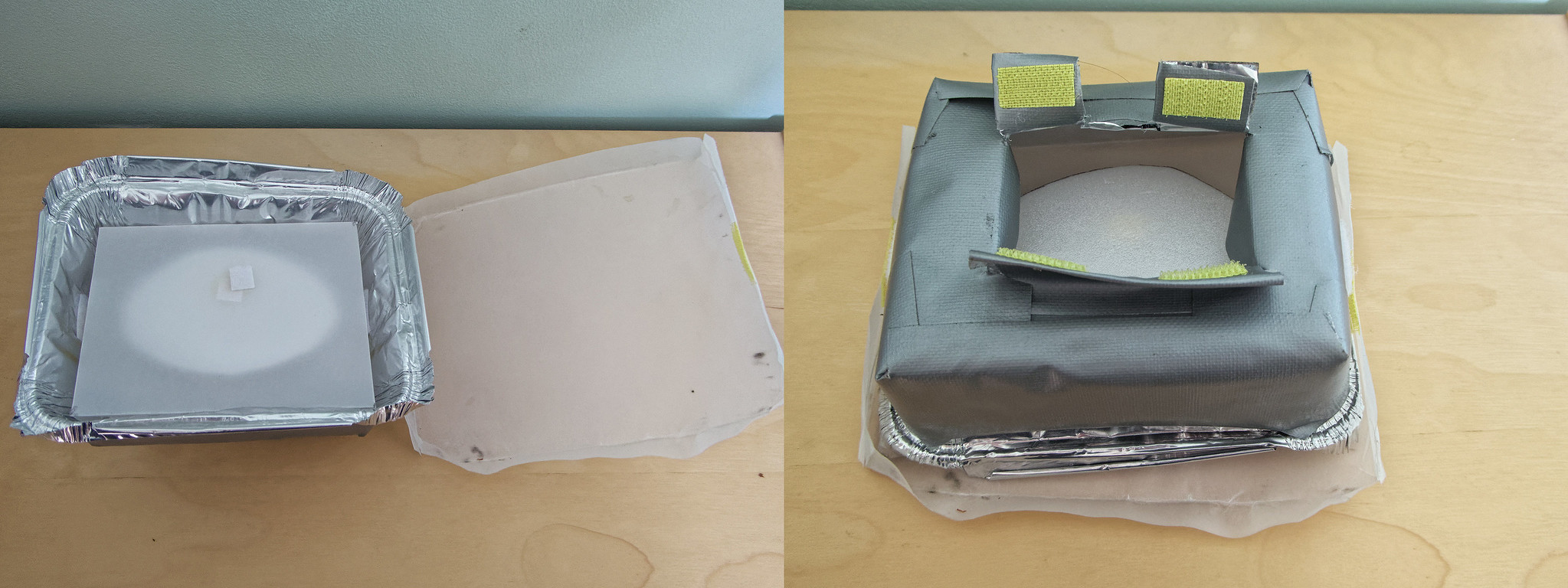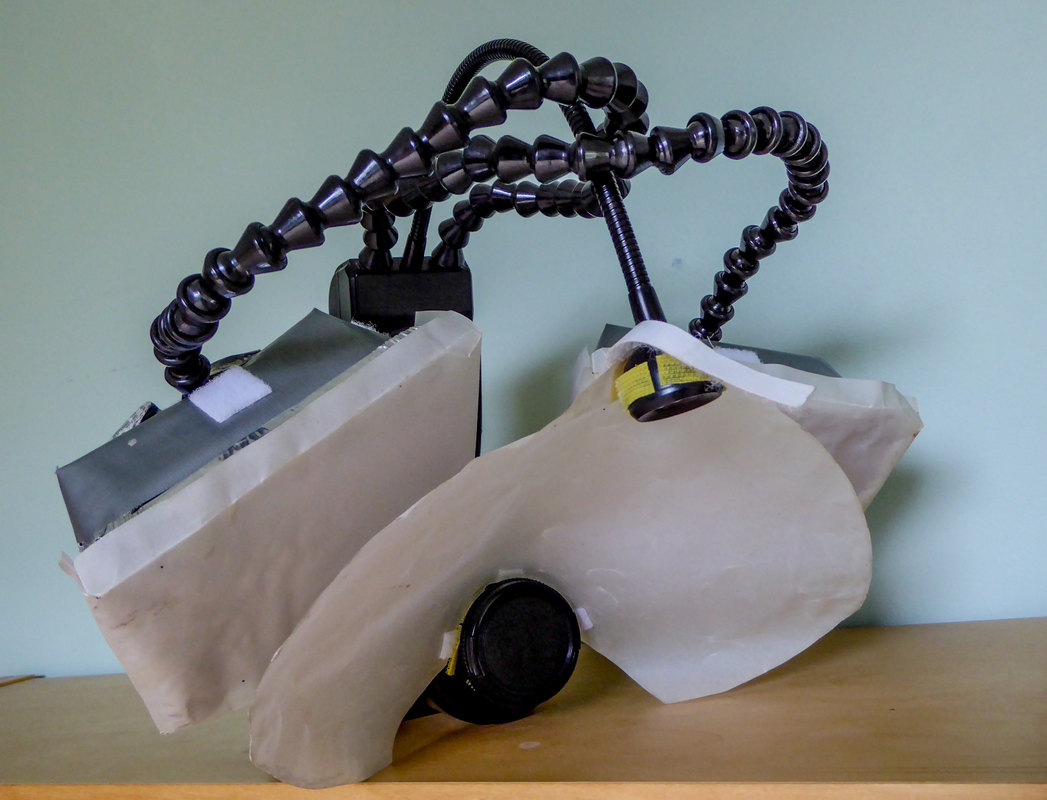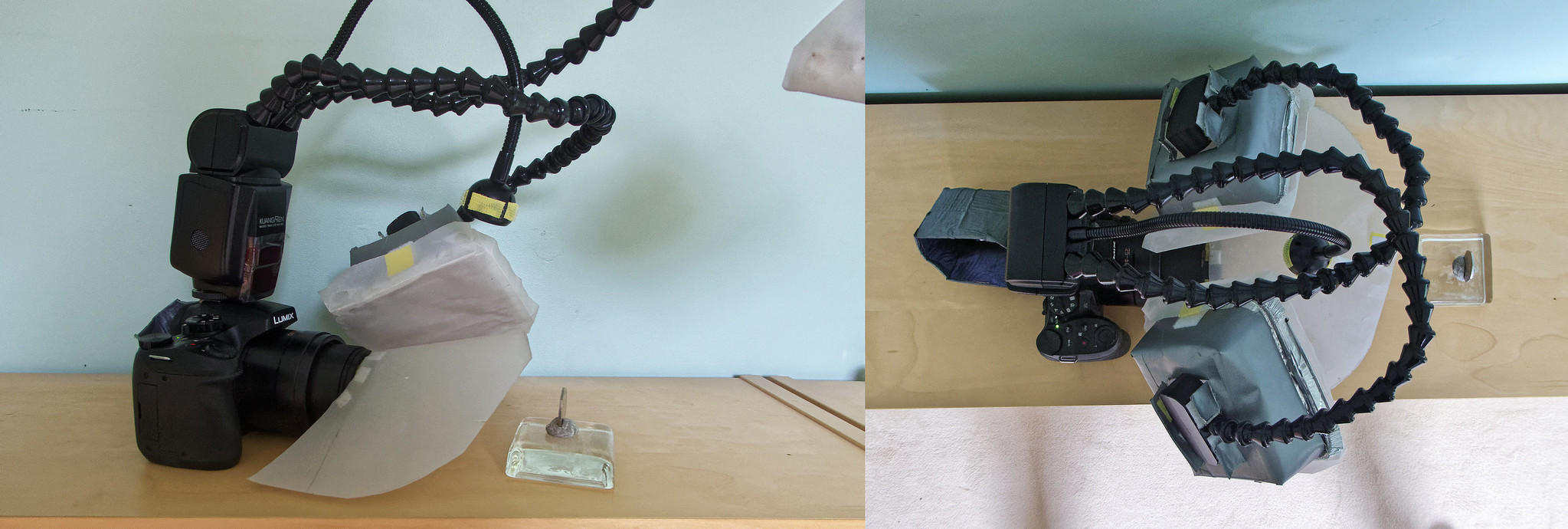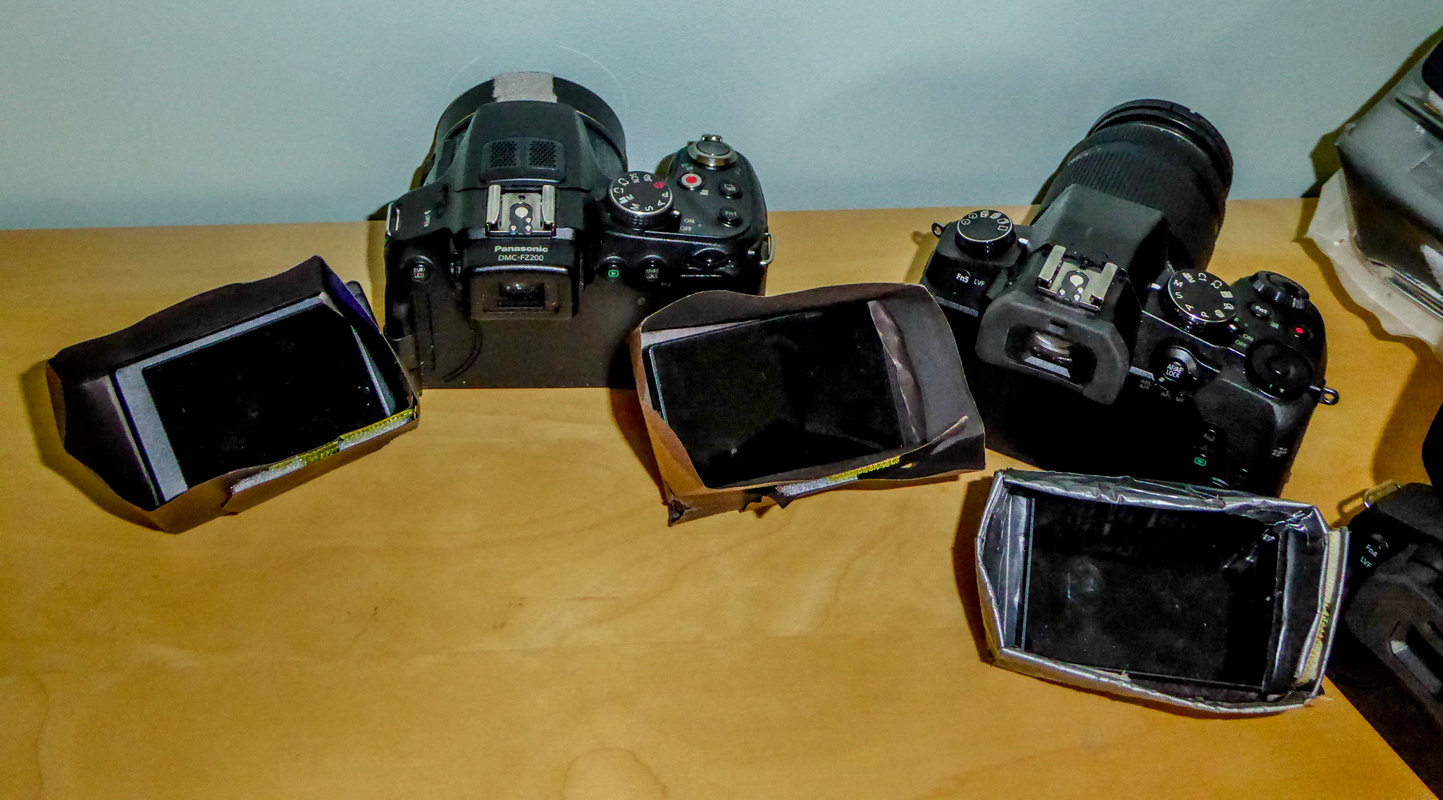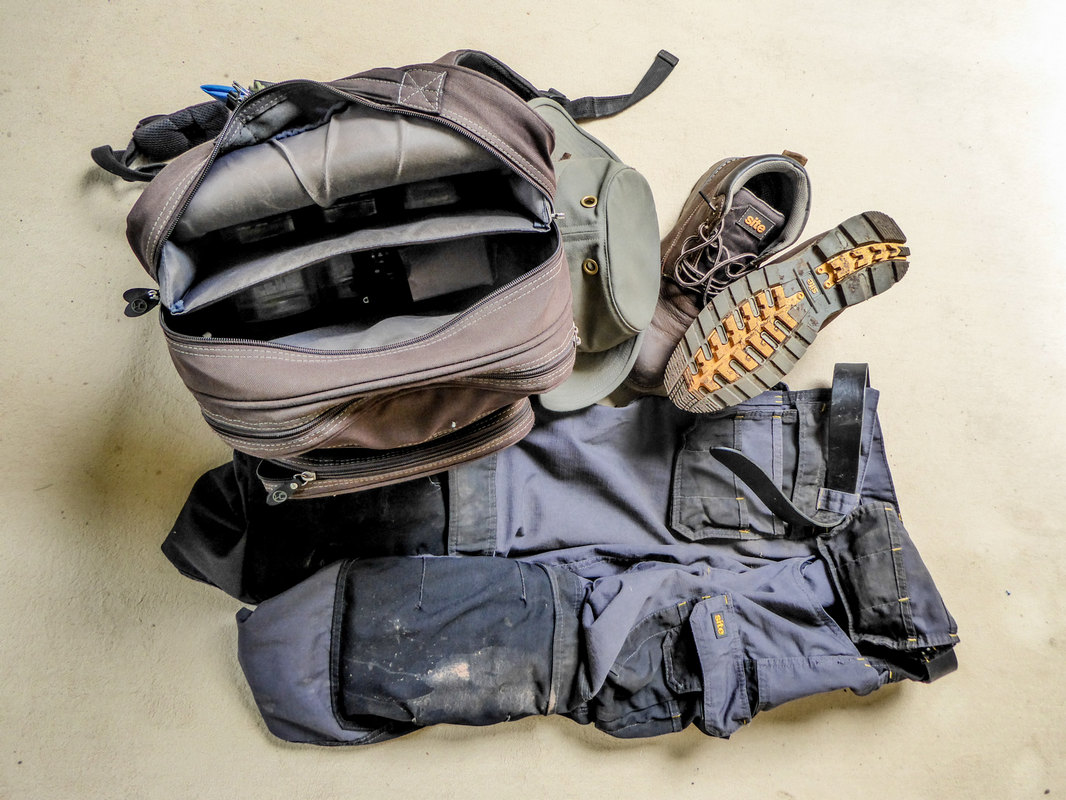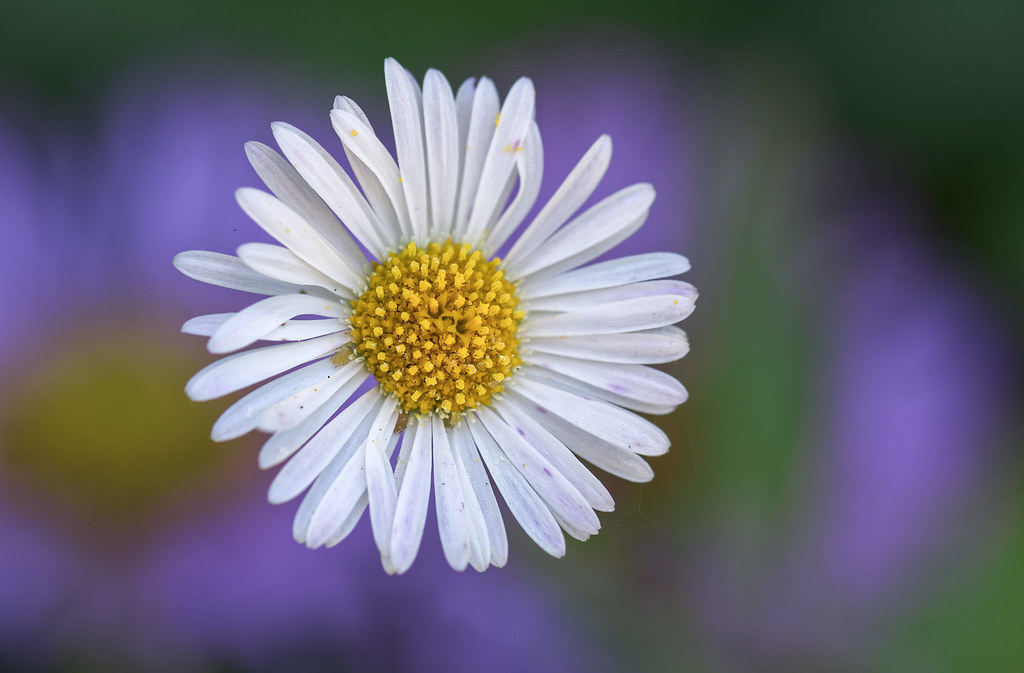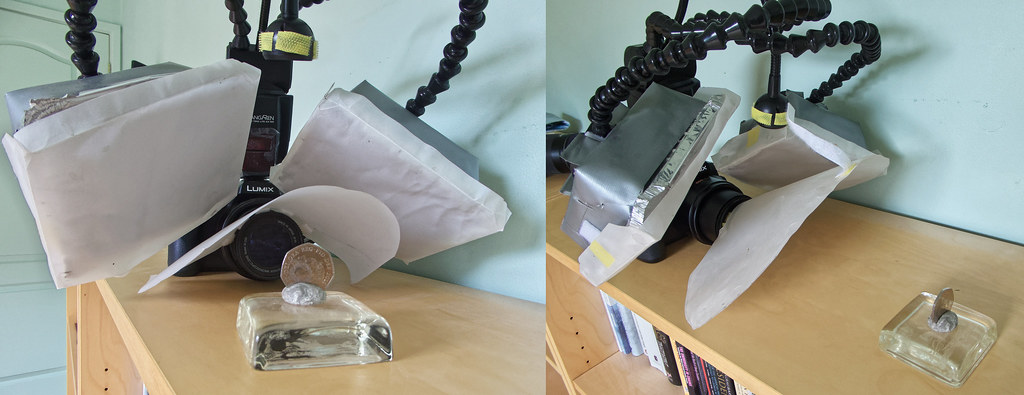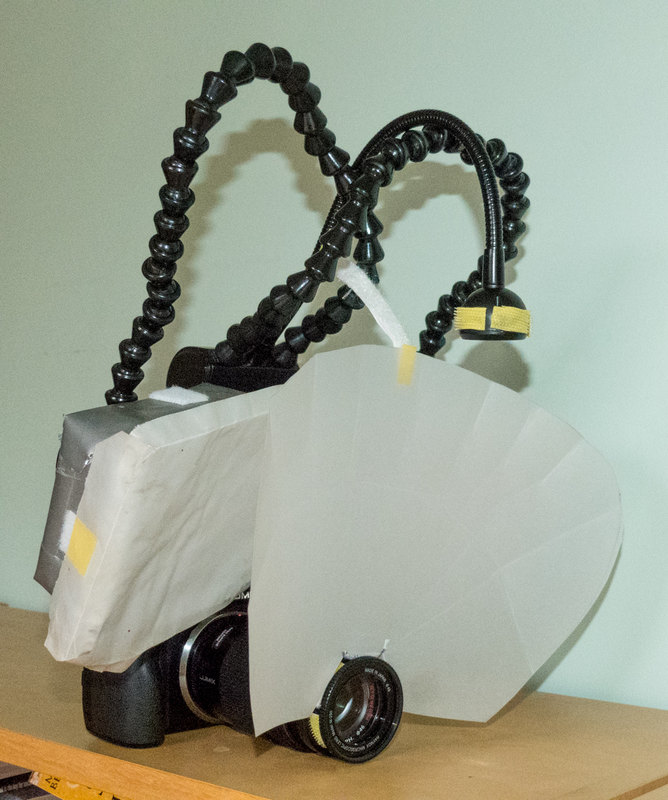I took the G80 to Jessops for the one hour turnaround sensor cleaning. This turned out to be poking at the sensor with a much used Lenspen ("We don't do wet cleaning, you'd have to go to a specialist for that"). This didn't shift the spot but did add plenty of dust spots to the sensor. After cleaning the sensor off at home, the next day I took the G80 to a camera repair shop. I showed the technician a photo showing the spot. He said there was no point him trying to move it. The spot was small and very dark. He said that meant it was underneath the glass on the sensor and it would need to have the sensor replaced. I took the camera back to Jessops to have it repaired and sure enough it came back a week later with a new sensor.
A day or two before the G80 went away for repair my FZ330 had gone back for repair, in this case for a faulty zoom mechanism. While my two preferred cameras were off being repaired I joined in a couple of interesting discussions at dpreview and did some related experiments. One was the question of whether micro four thirds cameras using contrast detect focusing can be used for birds in flight. (Answer "Yes, but with a lower hit rate than with a dSLR". The details are not relevant here, but FWIW I ended up with
one,
two,
three Flickr albums of mainly gulls in flight from sessions at the local boating pond and marina.)
The other discussions and experiments were directly relevant to my close-up/macro journey. Someone posted the same question in both the
micro four thirds and
Sony full frame forums at dpreview, asking whether he could get improved image quality by moving to full frame from micro four thirds, or adding full frame to his kit. His interest was in landscape, but I have been considering the same question in relation to botanical subject matter. I did a lot of reading (and posed some questions of my own), both in those threads and following up issues from them elsewhere.
There were various answers to his question, ranging from definite "Yes" to definite "No", and several variants of "It depends". I ended up still unsure as to whether I would actually see an improvement in my botanical images even if I used the very good 42Mpix sensor in the Sony A7rii coupled with the very sharp ("the second sharpest lens we have ever tested": DXO) Sony 90mm macro. But one thing did stick in my mind. Several people reckoned that the questioner would/might do better by investing in better glass for his micro four thirds camera.
Here I was seriously thinking about spending a shedload of money on a big and heavy piece of kit (that didn't have an articulated screen, which matters to me). What if I used better glass on my G80? After all, it doesn't have an AA filter and so should be good at picking up detail with a sharp lens. (And of course unlike with invertebrates, I rarely use very small apertures for botanical work, so "equalisation through diffraction" doesn't come into play.) And if I was willing to put up with the inconvenience of using a prime lens on this big and heavy full frame kit, I should be willing to use a prime lens on my G80.
And of course, I already have a suitable lens; the Olympus 60mm macro. It is very small and light, and sharp. Like most macro lenses it goes to f/2.8, so letting me use shallower DoF if I wanted to, although I didn't think this very likely. The lens does not have optical image stabilisation (OIS), but the G80 has In Body Image Stabilisation (IBIS). I decided to do an experiment.
Many of the flowers in the garden are looking a bit sad now, but when the G80 had come back I had tested it by putting the 45-175 on it and using it in the garden with and without a Canon 500D close-up lens for what botanical subjects I could find. (The G80 with 45-175 and 500D is my current preferred botanical kit, having taken over from the 70D, 55-250 and 500D.) The next day I put the Olympus 60mm macro on the G80 and went around the garden again.
This was not a fair, like for like exercise: I had captured about 400 images with the 45-175 in a single session; With the 60mm macro I had two sessions and captured around 900 images. On the other hand, it was significantly more breezy when I was using the 60mm macro. Also, the ambient light meant that it was difficult at times to see what I was doing and achieving by way of composition and DoF coverage, so there was a big hit and (often) miss element with the 60mm macro. I can't remember exactly what the conditions were like with the 45-175 as far as being able to see what I was doing was concerned. I don't recall it being a problem. Anyway, although both sessions were quite unrushed and contemplative, and although I did capture some somewhat similar images of the same subjects with the two setups, there was nothing strictly like for like and there was a large uncontrolled, random element to the capture process.
As this was a technical exercise, during the selection of images I was a bit more lenient than usual about composition and DoF coverage. (To be honest, from that point of view I'm not very keen on a few of the images I kept with both setups.) I ended up with 45 images from the 45-175 session (in
this album at Flickr) and 60 images from the two 60mm macro sessions (in
this album at Flickr). This was about 10 or 11 % for the 45-175 and about 7% for the 60mmm macro. This might suggest that the 45-175 did better. However, when I came to compare the two sets of images it seemed to me that some of the 60mm macro images had a quality that I did not think I had seen before in my botanical images - a combination of sharpness/detail and clarity - and something I did not see in any of the 45-175 images. (I have posted 8 of the images in
this post in the forum and all of them seem to me to have this edge over my previous, 45-175 botanical images, in terms of sharpness/detail or clarity, or both in some cases.)
In terms of handling, using the 60mm macro on the G80 felt better than using the Sigma 105 on the 70D. The rig is much lighter and this makes it easier to stretch out, over and around things for difficult to get at subjects. Even though I had two long sessions with the G80 and 60mm, weight never became an issue.
As with the Sigma 105 on the 70D, there was an issue with lack of reach, although there were only a handful of potential shots that I couldn't get because of lack of reach. I had had a lot of trouble with autofocus with the Sigma 105. even when using the focus limiter. The Olympus 60mm was slower than I'm used to with my achromats, but definitely (comfortably) usable for suitable subjects, including towards 1:1 as long as I switched on the focus limiter. By "suitable subjects" I mean ones where there was something at a suitable distance on which to focus for focus and recompose. Where there was nothing suitable to focus on I switched to manual focus. That worked ok. The focus ring is large and easy to turn with one finger. It does need a huge amount of rotation to get from infinity to 1:1, but the time needed to rack the focus wasn't a problem in these slow-paced sessions, and the focus limiter switch has a "go straight to 1:1" setting that helps sometimes.
The Olympus 60mm macro goes down to 1:1, which is a scene width of around 18mm on the G80. Prior to doing the test run with the Olympus 60mm I had discovered that adding a close-up lens didn't help much in terms of increasing the magnification. The alternative would be to use extension tubes, but I'm not prepared to keep opening up the camera because of the issue of dust on the sensor. I was therefore concerned that the 60mm macro would be limiting as far as the smaller scenes that I might want to capture. This proved not to be an issue, even though I photographed some quite small subjects.
With the Olympus 60mm it turned out that I did occasionally use some larger apertures than I have available on the 45-175 (which is f/4 to f/5.6). During the two sessions with the 60mm (and amongst the 60 "keepers") I used the full range of apertures from f/2.8 to f/22.
The G80 and 60mm macro are dust/splash resistant. (The 45-175 is not).
For now, the 60mm macro is going to live on my G80, and for now at least that will be my preferred rig for botanical work.
As I don't want to change lenses I will need to carry around another camera for scenes I can't reach with the Olympus 60mm. This might be the 70D and 55-250 (400mm equivalent reach; a bit heavy for just occasional use), the G5 with 45-175 (350mm equivalent reach; but I discovered that the G5 does after all have a spot (two in fact) that I can't remove), the FZ330 (600mm equivalent reach; inferior image quality, limited aperture/dof control) or the TZ60 (720mm equivalent reach; inferior image quality, almost no aperture/dof control, but very light).


